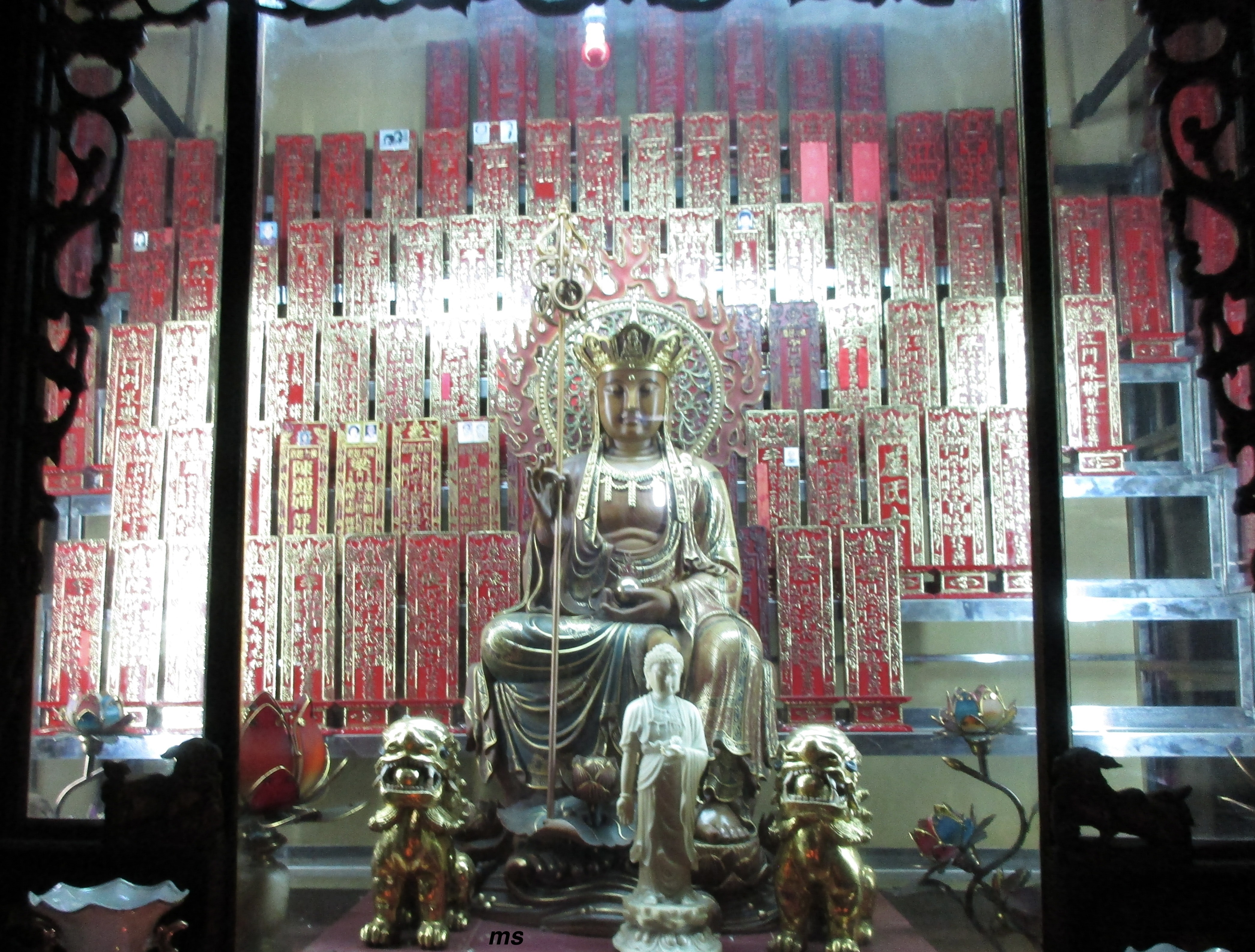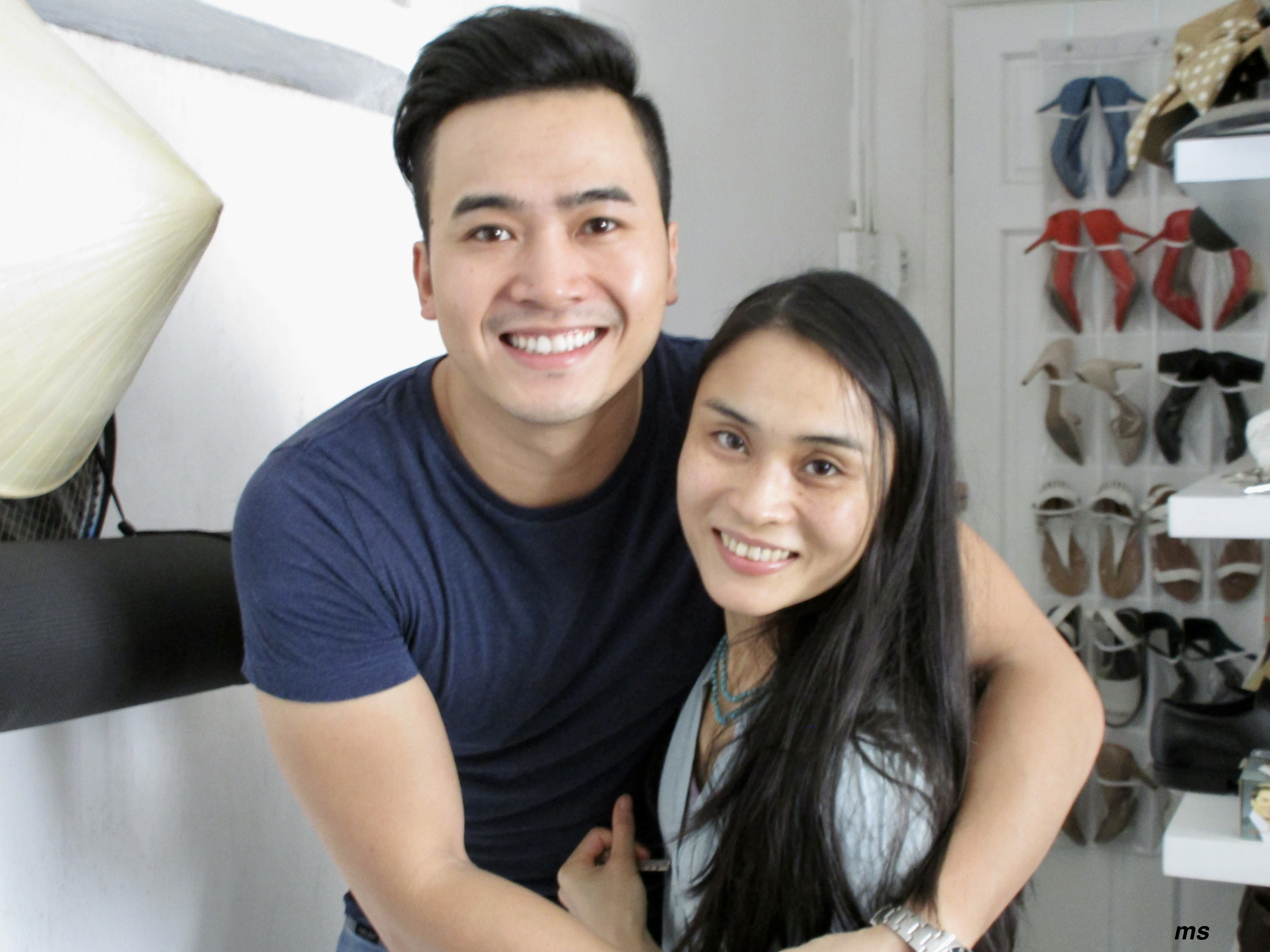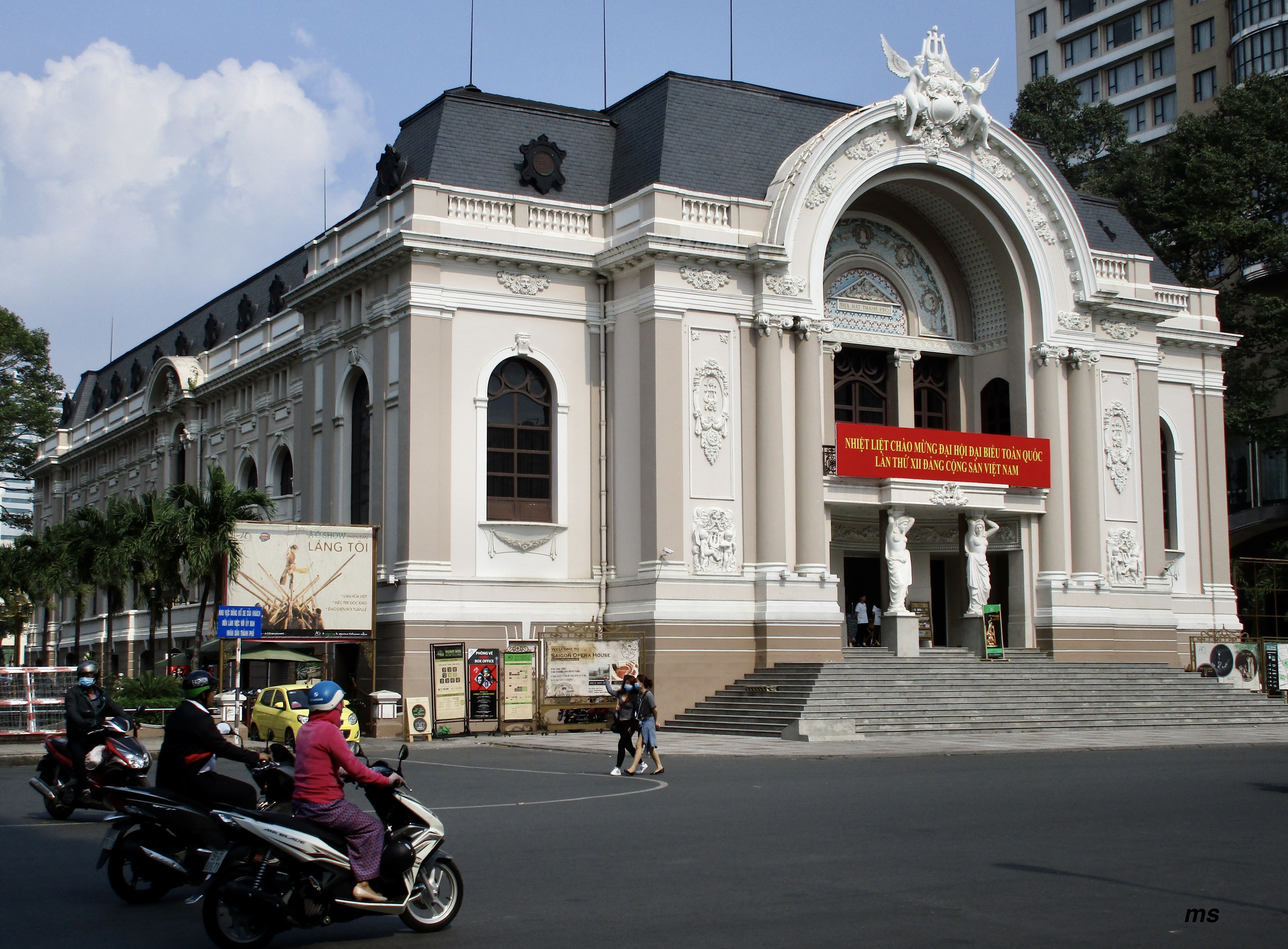Not far from the Botanic Gardens stood the Buddhist Jade Emperor Pagoda. It was built to honour the supreme Taoist god. In 1909, Luu Minh, a Chinese businessman who came to live in Vietnam, wanted a place to worship Buddha, so he was responsible for the Chinese style pagoda.

While shaded by soaring trees at the entrance, the grounds needed a little TLC. I entered to an overpowering haze of incense before a multitude of statues in various rooms. The pagoda was filled with paintings, altars and about 300 statues. I was lucky to arrive at a time when there weren’t many tourists, just a couple praying. Perhaps they were like many who especially came to this pagoda—a childless couple who believed that they were bound to be successful if they prayed at this site.

Back at my Airbnb, I climbed the four flights to the Mountain Retreat Restaurant where I looked down on the busy street. With a delicious green papaya salad and passion juice before me, I knew I was going to love my time in Vietnam because if the food was tasty, everything else would be equally as good.

The next day I savoured durian ice cream with Donny, the sister of my Airbnb host, Truyen, who rented a room in his apartment right in the heart of Old Saigon. Staying with the friendly pair was a great introduction to my venture into a country I’d never visited before. I explored the area around the opera house where Donny and I found a special restaurant to savour its delights. It was easy to pick out the French colonial buildings that filled many of the streets.

In the 1500s, the fractions between two ruling families—one in the north, the other in the south—made it easy for Europeans to invade. First the Portuguese arrived, then the Dutch, followed by the English and French all wanting a slice of Vietnam. The Portuguese had been banished by the Dutch. The Dutch and English left because they weren’t making enough profit. That left the French who began infiltrating the country with missionaries. Ho Chi Minh City, originally Saigon, had been the capital during French colonial times until its cessation in 1954. Ho Chi Minh (meaning bringer of light) was behind the push for independence and was one of the people responsible for reuniting the north and south, thus Saigon was renamed in his honour. As well, his face appeared on Vietnam’s currency, the dong.

I idled by the People’s Committee Building where a park commemorated Ho Chi Minh who stood waving towards Song Sai Gon. He reminded me that it was time for me to say goodbye to this busy city and head south.



Nice to see the city through your eyes, we didn’t have a good time in Ho Chi Minh but I don’t think we gave it enough time. We got horribly ripped off by our taxi and it went downhill from there so we left after a day. Maybe I’ll give it another chance one day.. Maggie
LikeLiked by 1 person
I can’t say I loved HCM City either, but most big cities don’t impress me. A pity you got ripped off on arriving. That’s never a positive introduction to a new country.
LikeLiked by 2 people